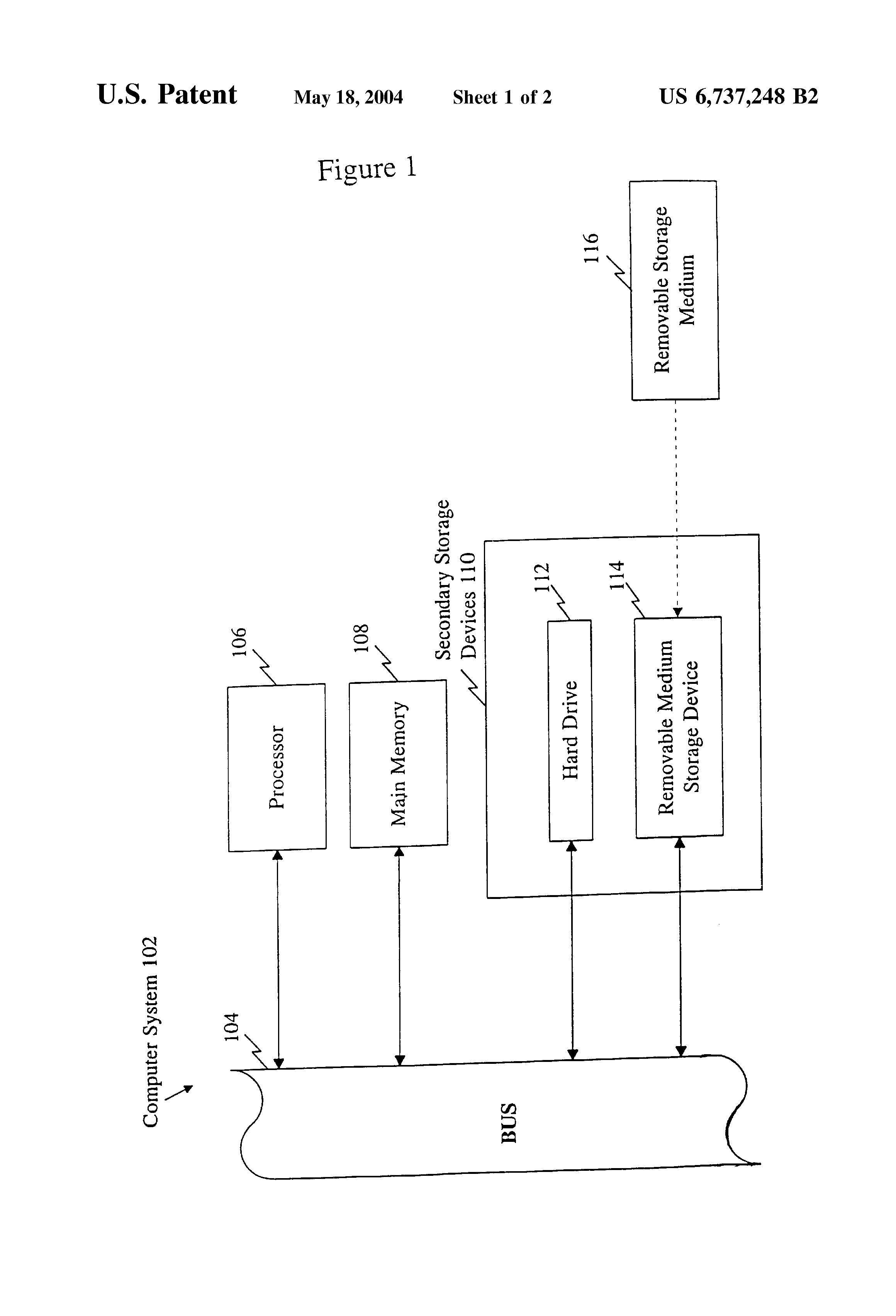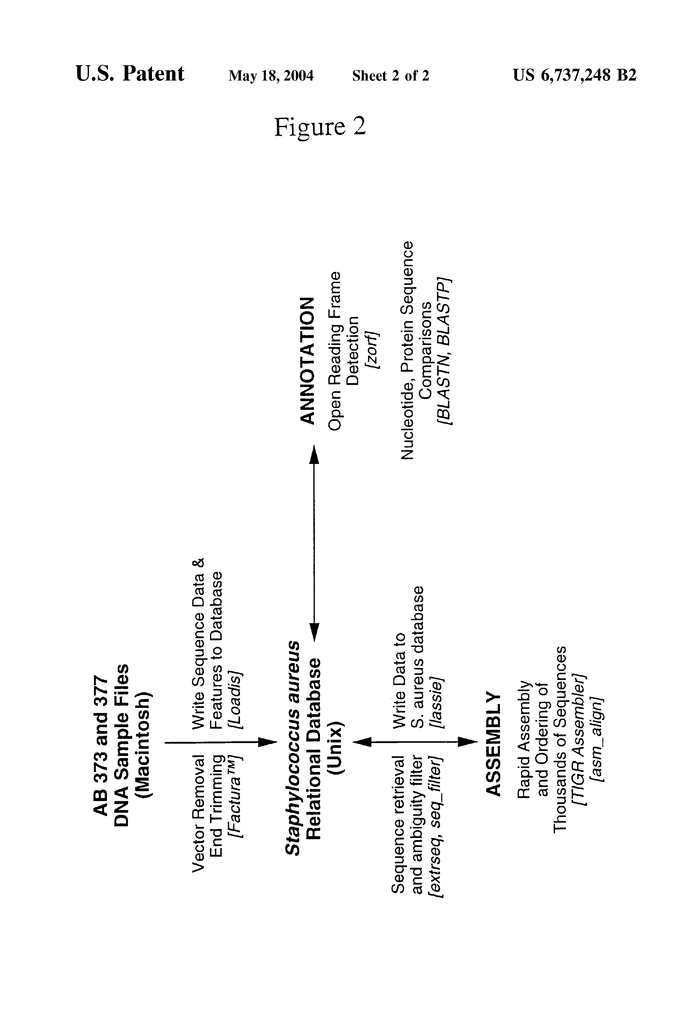Invented by Charles A. Kunsch, Gil A. Choi, Steven C. Barash, Patrick J. Dillon, Michael R. Fannon, Craig A. Rosen, Human Genome Sciences Inc
Polynucleotides are long chains of nucleotides, the building blocks of DNA and RNA. They can be used to create synthetic genes, which can then be used to study the function of specific genes in Staphylococcus aureus. Sequences, on the other hand, are short stretches of DNA or RNA that can be used to identify specific genes or mutations in the bacterium.
There are a number of companies and research institutions that are actively working on developing new polynucleotides and sequences for Staphylococcus aureus. Some of these companies are focused on developing new diagnostic tests that can quickly and accurately identify the bacterium in clinical samples. Others are working on developing new treatments, such as vaccines or antibiotics, that can help prevent or treat infections caused by Staphylococcus aureus.
One of the key challenges in developing new polynucleotides and sequences for Staphylococcus aureus is the bacterium’s ability to rapidly evolve and develop resistance to antibiotics. This means that researchers need to constantly stay ahead of the curve and develop new tools and techniques to study and combat the bacterium.
Despite these challenges, the market for Staphylococcus aureus polynucleotides and sequences is expected to continue to grow in the coming years. As more and more people become aware of the dangers posed by this bacterium, there will be increasing demand for new diagnostic tests and treatments. Additionally, advances in technology, such as next-generation sequencing, are making it easier and more cost-effective to develop new polynucleotides and sequences.
Overall, the market for Staphylococcus aureus polynucleotides and sequences is a rapidly evolving and dynamic field. As researchers continue to make new discoveries and develop new tools, we can expect to see continued growth and innovation in this important area of research.
The Human Genome Sciences Inc invention works as follows
The present invention contains polynucleotide and polypeptide sequences from the genome of Staphylococcus Aureus, as well as vectors and hosts containing the polynucleotides. Assays and other uses of these sequences are possible.” The invention also provides information on polynucleotide sequences and polypeptide sequences stored on computer-readable media and computer-based methods that facilitate their use.
Background for Staphylococcus Aureus polynucleotides, and sequences
The genus Staphylococcus contains at least 20 distinct species. Novick, R. P.. The Staphylococcus as a Molecular Genetic System Chapter 1. pgs. 1 – 37 in MOLECULAR BIOLOGY THE STAPHYLOCOCCI by R. Novick. VCH Publishers, New York (1990). By hybridization kinetics, species can differ by as much as 80% from each other, while strains within the same species can be at least 90% alike.
The gram-positive, facultatively-aerobic, clump-forming species Staphylococcus Aureus is one of the most important etiological agents for bacterial infection in humans. As we will discuss below,
Human Health and S. Aureus.
Staphylococcus Aureus is a common pathogen. (See, for instance, Mims et al., MEDICAL MICROBIOLOGY, Mosby-Year Book Europe Limited, London, UK (1993)). It can be an etiological agent for a wide range of conditions. The severity of these conditions can vary from mild to severe. S. aureus infection can cause many conditions, including: cellulitis and eyelid infections, food poisonings, burns, cellulitis and skin infections.
Burns
Burn Wounds are generally sterile at first. They can compromise the physical and immune barriers against infection, lead to fluid loss and electrolytes, and cause local or global physiological dysfunction. Contact with viable bacteria leads to mixed colonization of the wound site after cooling. The infection may only affect the non-viable debris (?eschar?) on the burn surface. It can progress to a full skin infection, causing it to invade the viable tissue beneath the eschar. The infection may also reach the subcutaneous tissues and enter the blood and lymphatic circulation. S. aureus can be found in many burn wound infections. It can cause severe septicaemia and destroy granulation tissues.
Cellulitis
Cellulitis is an acute skin infection that spreads from a superficial source to the lower cutaneous layer. It is most often caused by S. aureus and S. pyrogenes. Cellulitis can cause systemic infection. Cellulitis can also be a manifestation of synergistic bacteria gangrene. Cellulitis is usually caused by a combination of S. aureus with microaerophilic strainsococci. This condition causes necrosis. Treatment is limited to the removal of necrotic tissue. This condition can often lead to death.
Eyelid Infections
S. Aureus causes styes, and sticky eye?” Other eye infections include neonates. These infections usually affect only the surface of an eye but can sometimes penetrate deeper with more serious consequences.
Food Poisoning
Some strains are capable of producing one or more of five distinct, heat- and acid-stable enterotoxins (enterotoxins B-E), that cannot be destroyed by the digestive process in the small intestine. The toxin can cause severe vomiting if taken in sufficient amounts. However, it does not cause diarrhoea. Viable bacteria is not required for the effect. While the mechanism of action of toxins is well-understood, it is still not clear how they work.
Joint Infections
S. aureus” infects bone joints, causing osteomyelitis.
Osteomyelitis
S. aureus” is the most frequent causative agent for haematogenous Ostelitis. It is more common in children and adolescents than in adults. Because infection is most common at the end of a long-growing bone, it can also occur in physically young people. Infection is most often found near the epiphysial growth plates at the end of long-growing bones.
Skin Infections
S. aureus is most commonly associated with minor skin infections such as abscesses or boils. These infections are often resolved by the host’s normal response mechanisms. However, they can also develop into serious internal infections. Nasal carriers of S. aureus.
Surgical Wound Infections
Surgical wounds can often penetrate deep into the body. This poses a serious risk to the patient’s health. S. aureus is the leading cause of infection in surgical wounds. S. aureus has a remarkable ability to infiltrate surgical wounds. Sutured wounds can become infected by far fewer S.aureus cells than are required to infect normal skin. S. aureus can infect surgical wounds, causing severe septicaemia. S. aureus may infect the bloodstream, leading to infection and seeding of internal organs. This can cause systemic diseases such as osteomyelitis and endocarditis.
Scalded Skin Syndrome.
Click here to view the patent on Google Patents.


